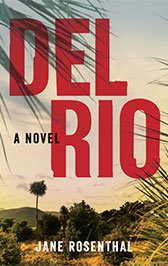Good mystery stories have been intriguing readers for hundreds of years. A great mystery writer is a master at manipulating his or her readers, dropping clues throughout the story, turning readers into amateur detectives and actively engaging them in solving the mystery.
Consider some of the masters of mystery writing — Edgar Allen Poe, Sir Arthur Conan Doyle, Agatha Christie, Raymond Chandler, and more current mystery writers such as Tana French and Louise Penny. They each have employed certain literary elements to intensify the suspense, building to the climax when all is revealed to the reader.
A good mystery story has a strong hook — a great beginning that is crucial to capturing the reader’s interest. Your opening line should set the mysterious tone for your story while the first paragraph should introduce a little more of an ominous, uneasy mood and atmosphere as well as a compelling setting and/or character.
Typically revealed in the first chapter is the crime: the event that drives the plot in a mystery story. It creates the main conflict that initiates the investigative process of the main character who is determined to solve the mystery. The main character can be a detective, like Philip Marlowe in Raymond Chandler’s books — or an amateur detective like Miss Marple in many of Agatha Christie’s mysteries. But the development of the main character is essential to the story. What’s his or her backstory, what connects them to the crime and/or the killer, and what motive do they have for wanting to solve the mystery.
Praise for the writing
Of course, any good mystery story has to have a bad guy who is, generally, not revealed until the plot reaches its climax. The plot is in constant motion; a cat-and-mouse kind of narrative with a trail of clues as well as some “red herrings” or false clues to throw the reader off the track — leading them away (or so they think!) from the real bad guy — as well as heightening the suspense.
The appeal as well as the fear of the unknown are the foundation of good mystery writing. Therefore, you want to pay close attention to how you structure the chapters in your book. You can open a chapter in the middle of an unknown place or a tense situation. Begin a chapter with the discovery that something previously believed to be true is really false — or just the opposite.
Think about ending chapters with new discoveries that can bring your main character closer to solving the mystery at hand, or that create new questions or more potential suspects.
The climax or ending of a good mystery should have that “aha, I knew it!” moment or “Oh, I didn’t see that coming,” but it now makes perfect sense. At the end of the story, your sleuth discovers the identity of the culprit, any doubts about other suspects are eliminated, and all loose ends are tied up.
Jane's second novel!

A once-thriving Central Valley farm town, is now filled with run-down Dollar Stores, llanterias, carnicerias, and shabby mini-marts that sell one-way bus tickets straight to Tijuana on the Flecha Amarilla line. It’s a place . . .
A convincing plot, mysterious characters, suspenseful dialogue, a bit of foreshadowing, a foreboding mood, and a strong hook to encourage the involvement of your reader and you have yourself the makings of a good mystery!
